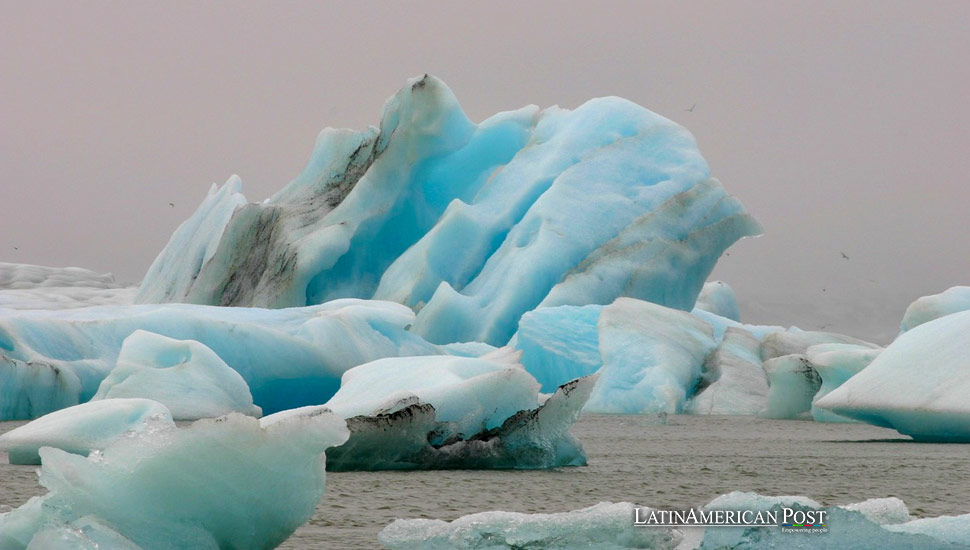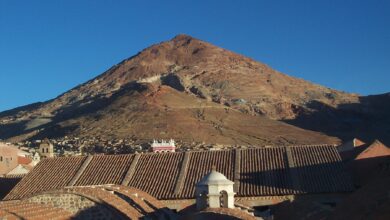Bolivia’s New Technology to Track Rapid Glacial Changes Amid Climate Crisis

In the face of the urgent climate crisis and its impact on water supply management, Bolivian scientists are at the forefront of implementing cutting-edge technology to monitor glacial changes in real time.
Leading the way in a significant scientific advancement, Bolivia is deploying state-of-the-art equipment to monitor glacial changes at an unprecedented speed. This initiative, spearheaded by scientists at Bolivia’s Higher University of San Andres, is a testament to the country’s unique role in understanding and mitigating the impacts of climate change on water supply.
Edson Ramirez, a prominent glaciologist at the university, emphasized the transformative potential of this new technology. Traditional glaciology methods typically provide data on a monthly or yearly basis. In stark contrast, the latest equipment installed at Huayna Potosi mountain peak enables real-time, hourly measurements of glacial mass. “This time, we are doing it quickly and in real-time,” Ramirez explained.
The ability to gather such frequent data is expected to significantly enhance the accuracy of melting rate assessments and provide vital information on glaciers’ remaining lifespans. This is particularly crucial for Bolivia, where glaciers play a pivotal role in the water supply.
The Vital Role of Glaciers
Glaciers are a critical component of the Andes mountain range’s water system. Studies in Bolivia’s Cordillera Real region indicate that glaciers contribute approximately 27% of the water supply during the dry season. This makes the accurate measurement of glacier changes essential for effective water resource management, especially in extreme weather events such as heat waves and droughts that have increasingly stressed water supplies across South America.
The new monitoring equipment provides more immediate data and establishes a baseline from which future changes can be tracked and analyzed. Gerd Dercon, head of the soil, water management, and crop nutrition laboratory at the joint FAO/IAEA Centre of Nuclear Techniques in Food and Agriculture, highlighted the importance of this baseline. “You can’t take measures or prepare yourself for the future if you don’t know where you are,” Dercon stated.
With this baseline data, policymakers and scientists can make more informed decisions about water management strategies. Potential actions include enhancing reservoir capacity, modifying water course routes, and constructing additional reservoirs to better cope with the variability in water supply driven by climate change.
Bolivia, like many countries in Latin America, is acutely vulnerable to climate change’s impacts. The region’s history is intertwined with its natural resources, and any significant changes to these resources have far-reaching implications for both the environment and local communities. The Andes mountains, stretching along the western edge of South America, have historically been a reliable source of water for millions of people. However, climate change is rapidly altering this dynamic.
The melting of glaciers in the Andes is not a new phenomenon, but the rate at which these changes occur has accelerated alarmingly in recent years. This is partly due to rising global temperatures and the increasing frequency of extreme weather events. The consequences of these changes are profound, affecting everything from agriculture to urban water supplies.
Local Impact and Community Adaptation
The impact of glacial melting is particularly severe in Bolivia, where many communities depend on glacial meltwater for their daily needs. In the Cordillera Real, for instance, the loss of glacial ice translates directly into reduced water availability during the dry season. This can lead to water shortages that affect agriculture, livestock, and human consumption.
Communities in the region have already started to feel the effects. Despite the challenges, farmers who rely on consistent water supplies for irrigation are showing remarkable resilience. They are adapting by finding new sources or changing their agricultural practices. Water rationing has become more common in urban areas, and the competition for dwindling resources is intensifying. This resilience is a testament to the human spirit in the face of adversity.
Technological Innovations and Future Prospects
The deployment of real-time monitoring equipment at Huayna Potosi is not just a significant step forward, but a beacon of hope in addressing these challenges. By providing continuous data on glacial mass and melting rates, scientists can better predict future water availability and develop strategies to mitigate the impacts of climate change. This technology holds the promise of a more sustainable future.
Not only does this technology provide a powerful tool for scientific research and practical applications, but it also has the potential to inspire similar initiatives in other regions facing similar challenges. The real-time tracking of environmental changes allows for more responsive and adaptive management of natural resources, a necessity in a world where climate conditions are increasingly unpredictable.
A Collaborative Effort
The success of this initiative in Bolivia underscores the importance of international collaboration in addressing global challenges. The partnership between Bolivian scientists and international organizations such as the FAO and IAEA highlights the benefits of sharing knowledge and resources
across borders. Such collaborations can lead to more effective solutions and help build resilience against the multifaceted impacts of climate change.
While installing new monitoring equipment is a significant milestone, it is only one part of a broader strategy needed to address the challenges of glacial melting and water scarcity. Continued investment in technology, research, and infrastructure is crucial. Equally important is the need for comprehensive policies integrating scientific data into water management practices and climate adaptation strategies.
As Bolivia and other Latin American countries navigate the complexities of climate change, fostering a proactive approach that combines immediate action with long-term planning is essential. This includes technological advancements, community engagement, and education to ensure that local populations are informed and involved in decision-making that affects their livelihoods.
Implementing real-time glacial monitoring in Bolivia represents a critical advancement in the fight against climate change and its impacts on water resources. By leveraging cutting-edge technology, Bolivian scientists are paving the way for more accurate and timely data essential for effective water management and climate adaptation.
Also read: Bolivia’s Aid to Gaza: A Powerful Gesture from the Poor
As the region grapples with the consequences of a warming planet, initiatives like this highlight the importance of innovative solutions and international cooperation. The lessons learned from Bolivia’s approach can serve as a valuable example for other countries facing similar challenges, reinforcing the need for a global response to one of the most pressing issues of our time.




